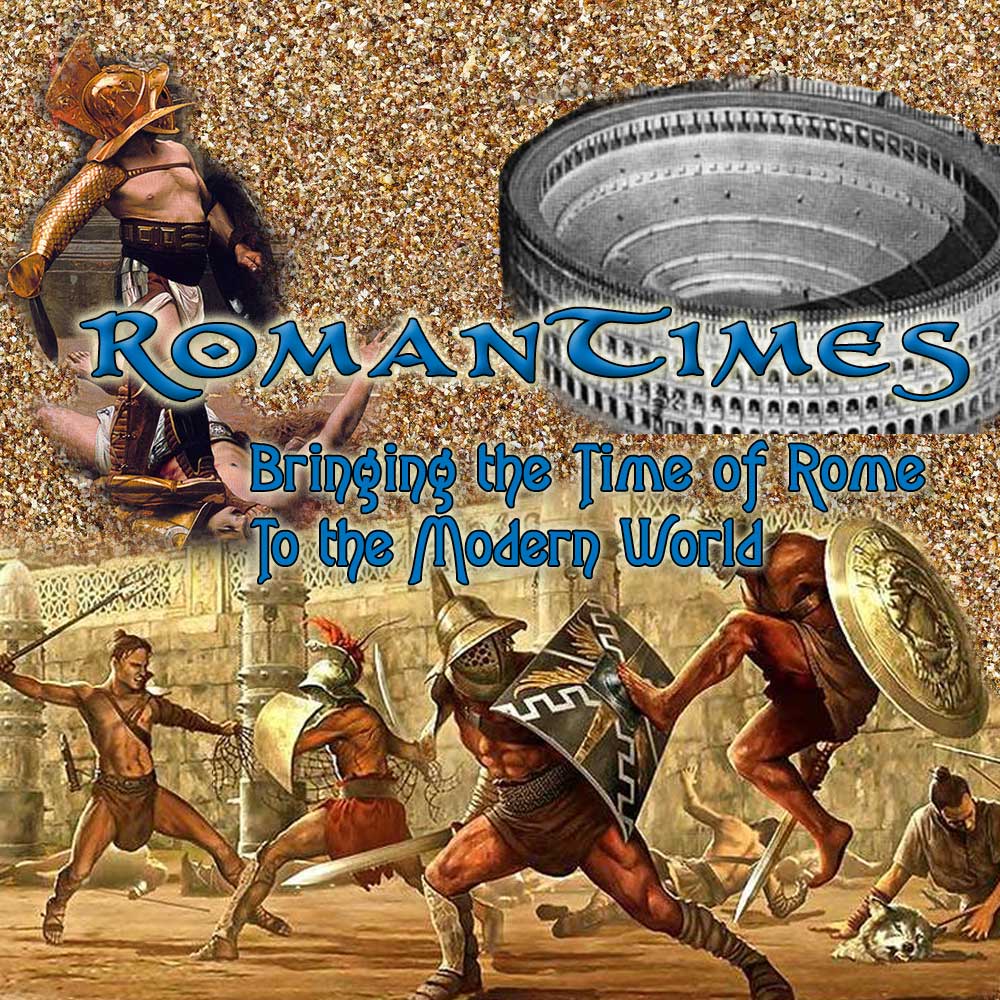The Organization, Training and Combat of Gladiators
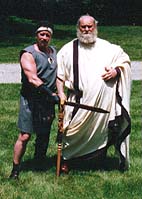
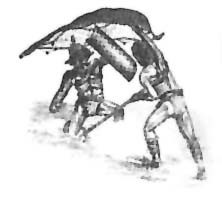
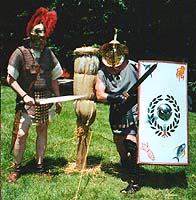 Maximus and his "Lanista" Mirmillo and Retiarius Commander and Maximus at the Palus
Maximus and his "Lanista" Mirmillo and Retiarius Commander and Maximus at the Palus
Gladiatorial combat was not invented by the Romans, but Romecertainly perfected the system. They had developed all the essentials and features of the system bringing it to the high state it had reached by the First Century AD. Thus it can be said that gladiatorial combat, in its most developed form, was specifically a Roman form of competitive sport.
In the course of the First and Second Centuries BC, these warlike spectacles assumed such dimensions that they required a great deal of organization. Gladiatorial schools called Ludi Gladiatorium were established throughout the Empire and Provincia; each run by a Lanista, a private entrepreneur who acquired suitable men by purchase or recruitment, trained them and then hired them out to interested parties. Many of these Lanista were former veterans of the arena who had been honored with the presentation of the coveted "Rudis" (wooden sword) by the Emperor, thereby earning their freedom and retirement from combat due to their prowess and popularity. The gladiators whose ranks also included condemned criminals and quite a number of volunteers (auctorati), lived in barracks and were subject to strict discipline. Their trainers aimed to achieve maximum physical fitness through a well-balanced diet, constant hard training and careful medical attention. The training itself was entrusted to doctores and magistri, most of them probably former gladiators.
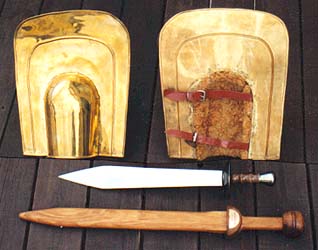
A "Galerus" shoulder shield, an arena style Gladius sword and a wood Rudius (practice/award sword). The Galerus was the only armor worn by a Retiarius. Note the wool pelt installed for comfort in the shoulder cavity. The arena style gladius was adapted from the Legionary gladius and was slightly shorter with a round metal hilt and wood grip without the usual large pommel found on the Legionary sword.
The wood Rudius shown here represents the ceremonial wood sword that would be presented by the Emperor to a gladiator being retired from gladiatorial combat with honors. The Rudius was also termed a "waster" and was used for training, that is "waisted" for non-combat practice by gladiators and legionary soldiers. This Rudius has three brass plates bearing the following inscriptions: on the top of the pommel, "Oberon" (the Commander's gladiatorial nomen (name)) - on one side of the hilt: Titus Flavius Vespasianus, the Emperor who presented him with the Rudius and on the other side of the hilt, Kalends Martius 833 AUC, the first day of March or Roman New Year, 80 AD, when he was presented with the Rudis upon his honorable retirement from the arena.
Training
The gladiators practiced in a small arena using blunt weapons (wasters) generally made of wood. They trained first with a stationary post (palus) and various moving obstacles and then later with an another gladiator as an opponent. This method of training and conditioning was also used in the army. The upper ranks of the paramilitary gladiatorial hierarchy were termed after these training posts and each category of gladiators had its own Palus-Primus, Palus-Secundus and so forth. Naturally the status and market value of a gladiator depended upon his success in the arena. Careful records were kept on his number of engagements, how often he won, lost, fought to a "draw" or had gained the highest distinction of all, the Laural Wreath.
A Family
The members of a gladiatorial "family" formed a "familia gladiatoria", usually named after its owner. In most public contests members of the same gladiatorial familia fought each other, so that if a duel ended in death it often a man's own comrade who had to deliver the fatal blow. At times, several Ludi-Gladiatorium (schools) would take part in a large spectacle and gladiatorial companies also went on tour. When gladiatorial combats came under state control, with the establishment of the Empire, the private schools continued in existence; but great Imperial Ludi were also set-up in the larger cities and provinces, managed by officials of knightly rank known as Procuratores. From the late 1st Century AD onwards, there were no less than four Imperial Ludi in Rome, the most important being the Ludas Magnus beside the Flavian Amphitheater (the Colosseum). An underground passage linked the school directly with the holding areas beneath the arena (floor) of the amphitheater, so that the gladiators could travel to and from the Ludus Magnus School without being seen by the public. Once called to take their turn, the grim business of gladiatorial combat began, with the sounds of metal clashing, and the screams of agony from the wounded and dying, amidst the cheers of the crowd, who reveled in the spectacle of the carnage. While detailed accounts were kept of the number of animals killed in the contests; few records were made of the countless gladiators who died for the pleasure of the Emperor and the masses.
It Begins
The gladiatorial games or Hoplomachia began with a grand feast for the combatants on the evening before their fights, to which the public were invited. The next day the gladiators would be driven in chariots or marched to the amphitheater where they were paraded before the cheering crowd. When they reached the imperial box or Pulvinar, they addressed the Emperor with the famous chant "Ave Imperator; Morituri te Salutant!" (Hail Emperor; Those who are about to die Salute Thee!) A variant was "Ave Caesar! Nos Moriruri te Salutamus!" (Hail Caesar! We whom are about to die salute you!)
The games commenced with a mock battle or "Prolusio" with dummy or padded weapons in the manner of a warm-up before the main event began in earnest. Individual fights were often interspersed with clowns and dwarfs parodying the real gladiator's battles or reenacting famous struggles from mythology, such as Hercules and Antaeus. Each pair of combatants would be selected by the "casting of lots" and to the accompaniment of trumpets, horns, drums and hydraulic organ, each duel took place. When a combatant capitulated it was the victor's right to choose whether his opponent was spared or dispatched. If the Emperor was present, the winner would defer to his judgment. The Emperor would frequently consult the opinion of the crowd. The winner received a palm branch for each victory; but he would have to earn many "palms" before being awarded the coveted Rudis (wooden sword) which granted him freedom from the Arena with the title of Rudiarii Very few gladiators ever survived to enjoy retirement. The epitaph of one gladiator has come down to us, which tells how he was killed by an pponent whose life he had spared in a previous encounter. It concludes with a solemn warning to all who fought in these dreadful events. Moreo ut quis quem vicerit, occidat! (Give no quarter to the fallen, no matter whom he be!)

